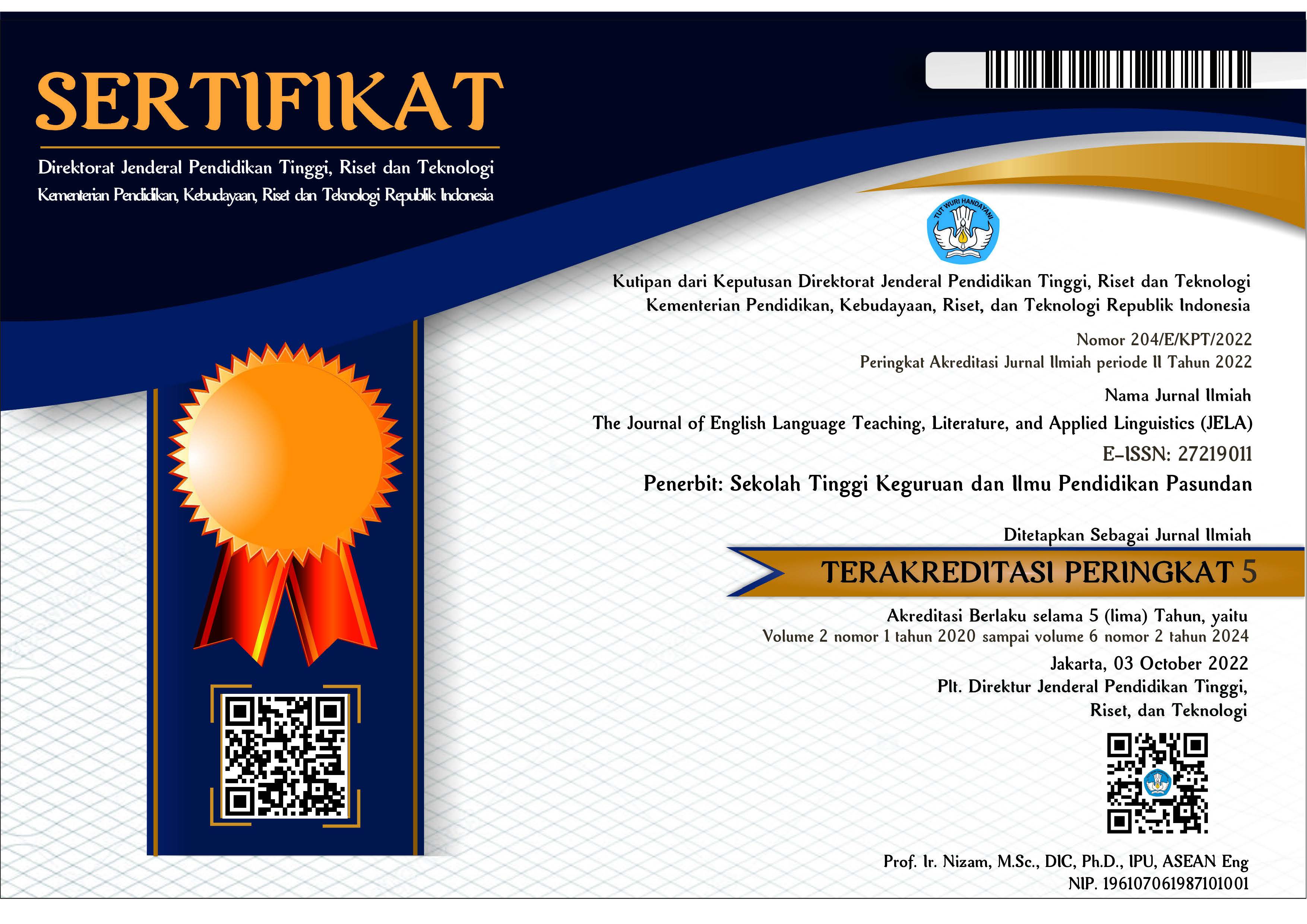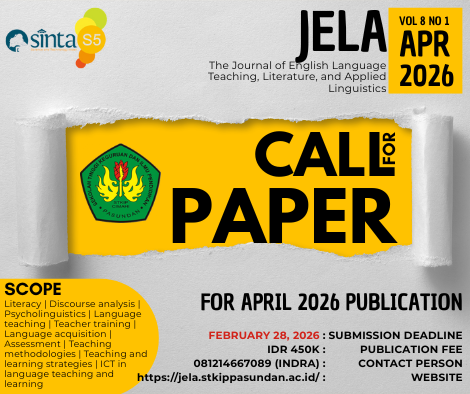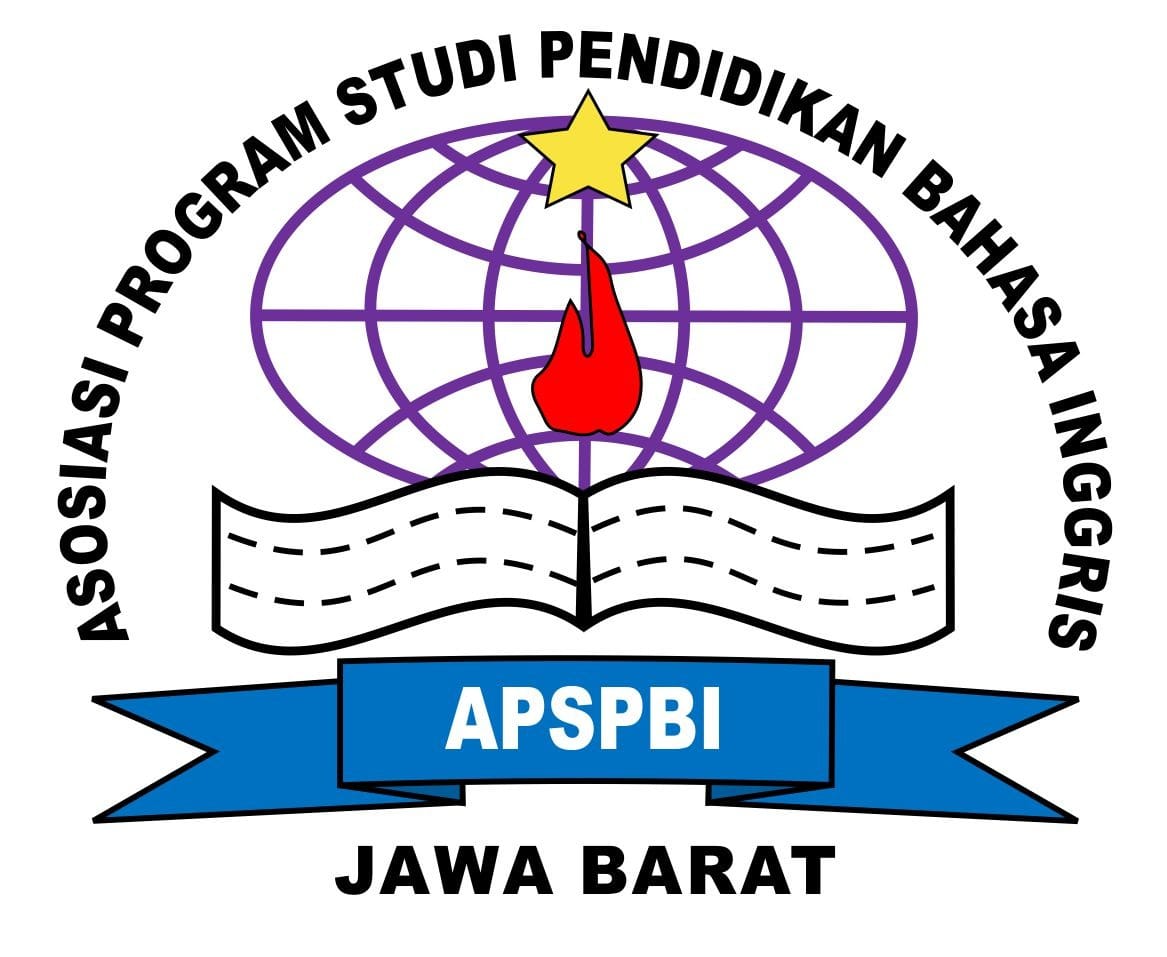WRITING ACCURACY PERCEIVED BY THE LANGUAGE OUTPUT-BASED TASK
DOI:
https://doi.org/10.37742/jela.v2i2.35Keywords:
Language output, accuracy, narrative textAbstract
This study has a purpose to find out the effectiveness of a task, which was exclusively invented for the study, on the students’ writing accuracy. The task, namely Language Output-based Task, is derived from the functions of the language output hypothesis proposed by (Swain, 1985). The three functions of language output are the noticing or triggering function, the hypothesis-testing function, and the metalinguistic or reflective function ((Swain, 1995);(Swain, M., and Lapkin, 1995). In her latest definition, Swain defines language output as an act of producing language either in form of speaking or writing (Swain, 1995). The study chose writing as the productive skill since the existing curriculum as this study conducted emphasized on accuracy in writing. In order to measure the students’ accuracy, the narrative text was involved in the study as it has a moderate level of language features. The samples of the study were the 60 first-year students of two different classes consisting of 30 students in each class. Since this is a pre-experimental study, it implemented pre test and post test to the experimental and control group. The pre and post test were created by involving the target text (i. e. narrative text). The result of the study showed that there was a significant difference between the post-test scores of the experimental group and the post-test scores of the control group. From its result, it was concluded that the Language Output-based task was effective to improve the students’ accuracy (Castro, C. and Wang, 2010; Izumi, 2002).










